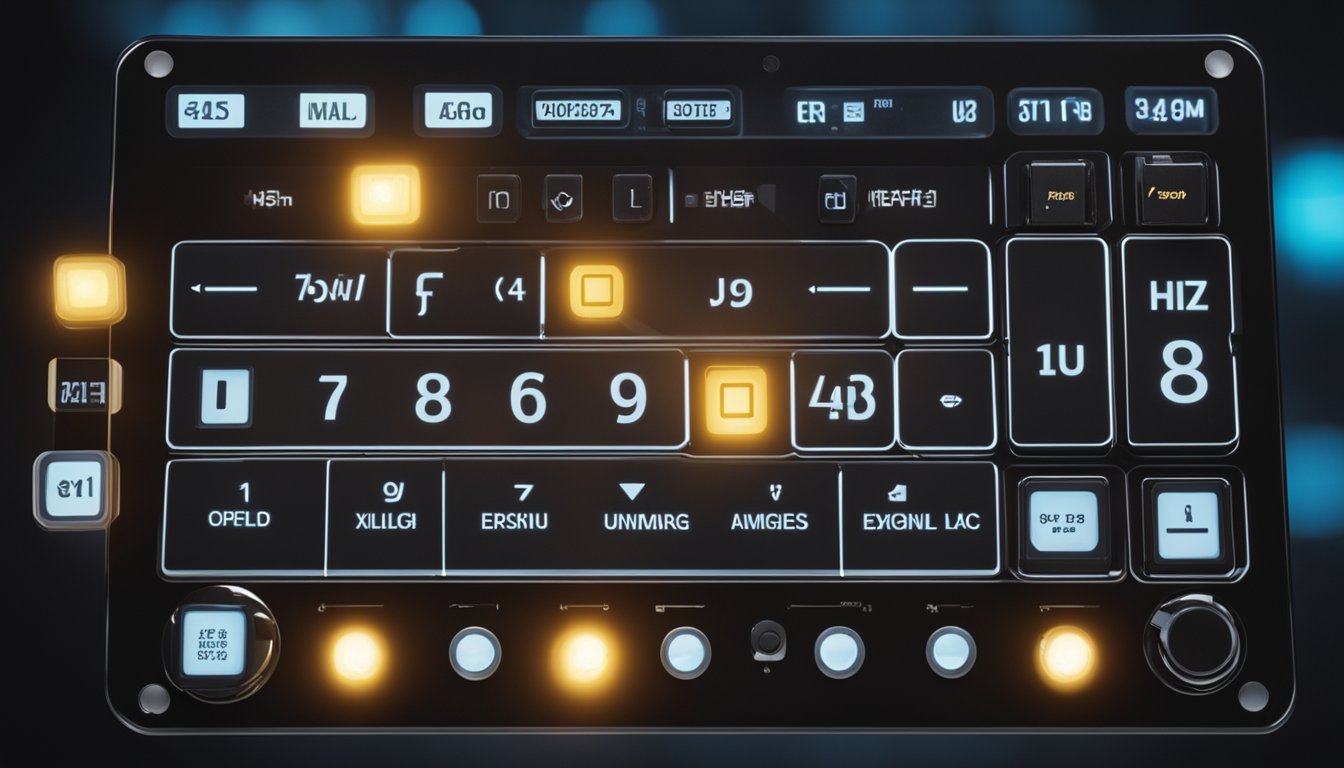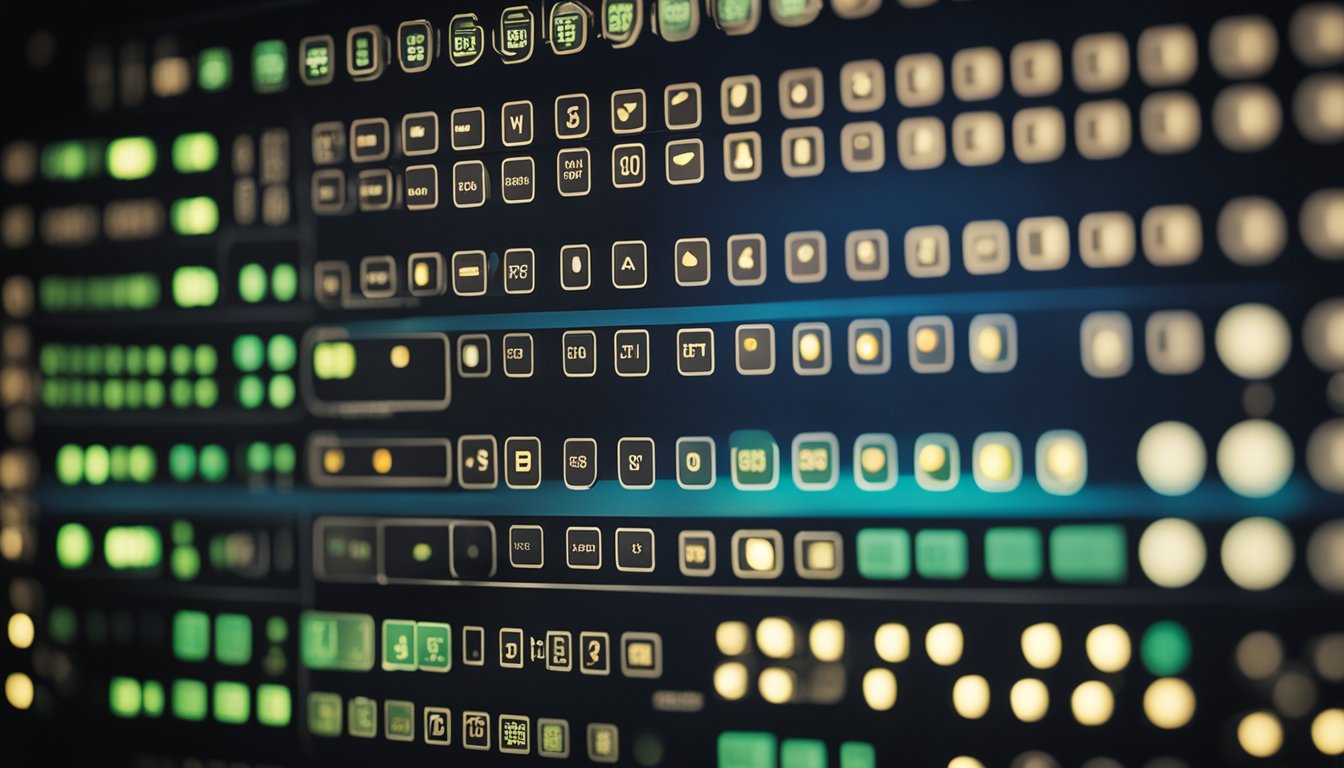Contact
Write to Us And We Would Be Happy to Advise You.
Do you have any questions, or would you like to speak directly with a representative?
By peter
Backlit Membrane Switch have become increasingly popular in recent years due to their versatility, durability, and cost-effectiveness. These switches are used in a wide range of applications, including consumer electronics, medical devices, industrial equipment, and automotive controls. They are typically made of several layers of flexible material, including a graphic overlay, adhesive spacer, and conductive layers.

The backlighting feature of these switches is what sets them apart from other types of switches. The backlighting provides illumination for the switch, making it easier to see and use in low-light conditions. Backlit membrane switches can be customized with different colors, patterns, and designs, making them highly versatile and suitable for a wide range of applications.

Backlit membrane switches are a type of interface that is widely used in various industries, including medical, automotive, and industrial. These switches are designed to provide a user interface that is easy to use and understand, even in low-light conditions. In this section, we will discuss the components and functionality of backlit membrane switches.
The components of a backlit membrane switch include a graphic overlay, a top circuit layer, a spacer layer, a bottom circuit layer, and a backlighting system. The graphic overlay is the top layer of the switch and displays the buttons or keys that the user interacts with. The top circuit layer is the layer beneath the graphic overlay and contains the conductive traces that transmit the user’s input to the device. The spacer layer provides a gap between the top and bottom circuit layers, which prevents the switch from registering false inputs. The bottom circuit layer is the layer that connects the switch to the device. The backlighting system illuminates the graphic overlay, making it easier to see in low-light conditions.
The functionality of a backlit membrane switch is relatively simple. When the user presses a button or key on the graphic overlay, it compresses the spacer layer, which causes the top circuit layer to come into contact with the bottom circuit layer. This contact completes the circuit, and the device registers the user’s input. The backlighting system illuminates the graphic overlay, making it easier to see the buttons or keys in low-light conditions. Backlit membrane switches are available in various backlighting options, including LED, EL, and fiber optic.
In summary, backlit membrane switches are a type of interface that is designed to provide a user-friendly experience, even in low-light conditions. These switches are made up of several components, including a graphic overlay, top and bottom circuit layers, a spacer layer, and a backlighting system. The functionality of a backlit membrane switch is relatively simple, with the user’s input completing the circuit and the backlighting system illuminating the graphic overlay.

When designing a backlit membrane switch, there are several important considerations to keep in mind. These considerations include material selection and illumination techniques.
The materials used in the construction of a backlit membrane switch can have a significant impact on its performance and durability. Some of the most commonly used materials for membrane switches include polyester, polycarbonate, and polyimide. Each of these materials has its own unique properties and advantages.
Polyester is a popular choice for membrane switches because it is durable, affordable, and easy to print on. It also has good chemical resistance and can withstand a wide range of temperatures. Polycarbonate is another popular material for membrane switches because it is strong, impact-resistant, and has good optical clarity. Polyimide is a high-temperature material that is often used in applications where the membrane switch will be exposed to extreme temperatures.
When selecting materials for your backlit membrane switch, it is important to consider factors such as the environment in which the switch will be used, the desired lifespan of the switch, and the specific requirements of your application.
There are several different techniques that can be used to illuminate a membrane switch. These include fiber optic backlighting, LED backlighting, and electroluminescent backlighting.
Fiber optic backlighting is a popular choice for applications where space is limited and power consumption is a concern. It uses a series of fiber optic cables to transmit light from a remote light source to the membrane switch. This allows for a very thin profile and low power consumption.
LED backlighting is another popular option for membrane switches. It uses LEDs to provide bright, even illumination across the entire switch. LEDs are energy-efficient and can be customized to produce a wide range of colors.
Electroluminescent backlighting is a third option for membrane switches. It uses a thin layer of phosphor to produce a soft, even glow across the entire switch. Electroluminescent backlighting is often used in applications where a low profile and even illumination are desired.
When selecting an illumination technique for your backlit membrane switch, it is important to consider factors such as power consumption, brightness, and color options.
When it comes to manufacturing backlit membrane switches, there are two crucial processes that need to be executed with precision: printing and cutting, and assembly.
The first step in the manufacturing process is to print the circuit layout onto the polyester layer of the membrane switch. This is done using a specialized screen printing process that ensures the conductive ink is deposited onto the polyester layer in the exact pattern required for the circuit to function properly.
Once the circuit layout has been printed, the next step is to cut the membrane switch to the desired shape and size. This is done using a precision cutting machine that ensures the switch is cut to the exact specifications required for the final product.
The final step in the manufacturing process is to assemble the membrane switch. This involves bonding the printed polyester layer to the adhesive layer and then bonding the adhesive layer to the backlit layer. The backlit layer is what gives the membrane switch its unique illuminated appearance.
Once the layers have been bonded together, the next step is to add the tactile domes and any other necessary components, such as LEDs or connectors. This is done using a specialized assembly process that ensures all components are properly aligned and securely attached to the membrane switch.
Overall, the manufacturing process for backlit membrane switches requires a high degree of precision and attention to detail. By understanding the intricacies involved in the printing and cutting, and assembly processes, manufacturers can ensure the functionality, reliability, and longevity of their switches.
Backlit membrane switches are widely used in various applications, ranging from consumer electronics to industrial control panels. These switches offer a sleek and low-profile design that can be easily customized to fit the aesthetic of the product. Additionally, membrane switches can be backlit for added visibility and convenience.
In the realm of consumer electronics, backlit membrane switches are used in a wide range of devices, including smartphones, remote controls, and home appliances. These switches offer a user-friendly interface that is both durable and cost-effective. The backlighting effect achieved by these switches provides added visibility in low light conditions, making them easy to use in any environment.
Backlit membrane switches are also widely used in industrial control panels. These switches provide a reliable and cost-effective interface that can be customized to meet the specific needs of the application. The backlighting effect achieved by these switches provides added visibility in low light conditions, making them ideal for use in any environment.
In summary, backlit membrane switches are a versatile and cost-effective option for a wide range of applications. Whether you are designing a consumer electronic device or an industrial control panel, backlit membrane switches can provide a reliable and user-friendly interface that is both durable and cost-effective.
Backlit membrane switches offer a great advantage in terms of durability and reliability. Membrane switches are designed to withstand harsh environments and heavy usage. The backlit membrane switches are sealed and protected from moisture, dust, and other environmental factors that could damage the switch. This makes them very reliable and long-lasting. The switches are also resistant to wear and tear, and the backlighting technology does not wear out quickly. This means that the switches will continue to function properly for a long time, even with heavy usage.
Backlit membrane switches are cost-effective compared to other types of switches. They are easy to manufacture, which makes them less expensive to produce. The switches are also lightweight and compact, which reduces shipping costs. Additionally, the switches require less maintenance, which reduces overall costs. The backlighting technology used in these switches is also energy-efficient, which reduces power consumption and operating costs.
However, there are some challenges associated with backlit membrane switches. One challenge is that they require a higher initial investment than traditional switches. This is because the backlighting technology used in these switches is more expensive than other types of technology. Additionally, the switches are more complex to manufacture, which requires specialized equipment and expertise. This can increase production costs.
Another challenge is that the switches may not be suitable for all applications. Backlit membrane switches are ideal for applications that require low to medium actuation forces. However, they may not be suitable for applications that require high actuation forces. Additionally, the switches may not be suitable for applications that require high-temperature environments.
In summary, backlit membrane switches offer several advantages, including durability, reliability, and cost-effectiveness. However, there are also some challenges associated with these switches, including higher initial investment costs and limitations in terms of suitable applications.
Do you have any questions, or would you like to speak directly with a representative?